1. Working in the community
1.1. Training/coordination
1.1.1. 6010. Early CE training for the field team.
1.1.2. Case studies
1.1.2.1. 88. Tri Nguyen's advocay team - engaging community stakeholders
1.1.2.2. 172. Community facilitators in Paris - local volunteers used for CE activities
1.1.2.3. 387. Working in dangerous areas
1.1.2.4. 3010. Giving the community a voice
1.1.2.5. 398. Staying safe in Medellín
1.1.2.6. 387. Working in dangerous areas
1.1.2.7. 3032. Keeping messaging fresh
1.1.2.8. 3004. Removing BG traps after years of engagement
1.1.2.9. 117. Rapid deployment, city-wide
1.1.2.10. 39. Print matters
1.1.2.11. 26. Embracing engagement
1.1.2.12. 65. Extreme weather
1.1.2.13. 9. Getting your map right
1.1.3. Resources
1.1.3.1. Guidelines: Staff induction training
1.2. Field work
1.2.1. Case studies
1.2.1.1. 88. Tri Nguyen's advocay team - engaging community stakeholders
1.2.1.2. 172. Community facilitators in Paris - local volunteers used for CE activities
1.2.1.3. 387. Working in dangerous areas
1.2.1.4. 3010. Giving the community a voice
1.2.1.5. 398. Staying safe in Medellín
1.2.1.6. 387. Working in dangerous areas
1.2.1.7. 3032. Keeping messaging fresh
1.2.1.8. 3004. Removing BG traps after years of engagement
1.2.1.9. 117. Rapid deployment, city-wide
1.2.1.10. 39. Print matters
1.2.1.11. 26. Embracing engagement
1.2.1.12. 65. Extreme weather
1.2.1.13. 9. Getting your map right
1.2.2. Resources
1.2.3. Troubleshooting
1.2.3.1. 3054. Reaching people in high-rise buildings
1.2.3.2. 3046. Engaging active opponents
2. Stakeholder engagement
2.1. Introduction
2.2. Early stakeholder engagement
2.2.1. Resources
2.2.1.1. Guidelines: Early Engagement Pack
2.2.1.2. Brand resources folder
2.2.2. Stories
2.2.2.1. 6007. Overview: Starting communications and engagement
2.3. Key stakeholder mapping
2.3.1. Resources
2.3.1.1. Guidelines: Key stakeholder engagement
2.3.1.2. Presentation: Mapping community stakeholders
2.3.2. Stories
2.3.2.1. 6001. Overview: Mapping high-level stakeholders
2.3.2.2. 249. Mapping stakeholders in Paris (Colombia)
2.4. Stakeholder engagement
2.4.1. Resources
2.4.1.1. Guidelines: Key stakeholder engagement
2.4.2. Stories
2.4.2.1. 6002. Overview: Engaging high-level stakeholders
2.4.2.2. 6023. Overview: Stakeholder management systems
2.4.2.3. 389. Adapting key messages
2.4.2.4. 346. Sharing messaging with high-level stakeholders
2.4.2.5. 3060. Playing table tennis with stakeholders
2.4.2.6. 3046. Engaging active opponents
3. Mass media
3.1. Introduction
3.2. Engaging with the media
3.2.1. Resources
3.2.1.1. Global key messages and Q&A
3.2.1.2. Guidelines: Media
3.2.1.3. Template: Media Release
3.2.2. Stories
3.2.2.1. 91. Mobilising media
3.2.2.2. 257. Managing negative media
3.2.2.3. 202. Responding to dengue during a release
3.2.2.4. 346. Sharing messaging with high-level stakeholders
3.3. Media training
3.3.1. Stories
3.3.1.1. 130. Learning media skills
3.3.1.2. 198. Luciano's media training
3.4. Monitoring media coverage
3.4.1. Resources
3.4.1.1. Guidelines: Meltwater media monitoring
3.4.1.2. Template: Media report
3.4.1.3. Example: Media report
3.4.2. Stories
3.4.2.1. 376. Engaging traditional media
3.5. Crisis communications
3.5.1. Resources
3.5.1.1. Guideline: Crisis Communications
3.5.1.2. Template: Crisis Communications Plan
3.5.2. Stories
4. Content production
4.1. Introduction
4.2. Brand
4.2.1. 6008. Overview: Using current messages
4.2.2. Resources
4.2.2.1. WMP brand resources folder
4.2.2.2. Guide: WMP Brand Resources
4.2.2.3. Key messages
4.2.2.4. WMP style guide
4.2.2.5. Guidelines: Images
4.2.3. Stories
4.2.3.1. 3032. Keeping messaging fresh
4.2.3.2. 389. Adapting key messages
4.2.3.3. 3022. Frequently asked questions
4.3. Communications materials
4.3.1. Resources
4.3.1.1. Guidelines: Early engagement pack
4.3.1.2. WMP style guide
4.3.1.3. Guideline: Project Announcement
4.3.1.4. Template: Project Announcement
4.3.1.5. Template: Project Announcement Media Release
4.3.2. Stories
4.3.2.1. 39. Print matters
4.3.2.2. 133. Scaling up communication
4.3.2.3. 418. Audience testing comms materials
4.3.2.4. 412. Reporting results to stakeholders
4.4. Case studies
4.4.1. Resources
4.4.1.1. Template: Case study collection
4.4.1.2. Guideline: Case study
4.4.2. Stories
5. Digital marketing
5.1. Introduction
5.2. Social media
5.2.1. Resources
5.2.1.1. Guideline: Social Media
5.2.1.2. How to create a social media strategy
5.2.1.3. How to implement Facebook advertising
5.2.1.4. Guideline: Social Media Monitoring
5.2.1.5. How-to: Create a social media report
5.2.1.6. Guildine: WhatsApp for community engagement
5.2.2. Case studies
5.2.3. Troubleshooting
5.3. Website
5.3.1. Resources
5.3.1.1. Guideline: Website
5.3.2. Stories
5.3.3. Troubleshooting
5.4. Email marketing
5.4.1. Resources
5.4.1.1. Guideline: email marketing
5.4.2. Stories
5.4.3. Troubleshooting
6. Public acceptance model
6.1. Introduction
6.1.1. 6003. Creating the Public Acceptance Model
6.1.2. Presentation: PAM
6.2. Campaigns
6.2.1. LINK: Campaign strategy Toolkit
6.3. Incident management
6.3.1. Resources
6.3.1.1. Guidelines: Incident management
6.3.1.2. Template: Incident management protocol
6.3.1.3. How to: Getting started with the IMS
6.3.2. Stories
6.3.2.1. 7015. Explainer: Risks, issues and crises
6.3.2.2. 3. Managing incident reports
6.3.2.3. 1. Dealing with opposition
6.3.2.4. 3046. Engaging active opponents
6.4. Community surveys
6.4.1. Resources
6.4.1.1. Guidelines: Community-based surveys
6.4.1.2. Template: Community-based survey questionnaire
6.4.1.3. Template: Community-based survey sample size calculator
6.4.1.4. Template: Community-based survey cluster sampling with probability proportional to size
6.4.2. Stories
6.4.2.1. 6026. Assessing community acceptance (video only)
6.4.2.2. 268. Community sensing survey
6.4.2.3. 254. Creating a community profile for Nha Trang
6.4.2.4. 256. Understanding the community on Tri Nguyen Island
6.5. Community reference groups
6.5.1. Resources
6.5.1.1. Guidelines: Community reference groups
6.5.2. Case studies
6.5.3. 6025. Overview: Community reference groups
6.5.4. 3026. Increasing attendance at reference group meetings
6.6. Public acceptance assessments
6.6.1. Resources
6.6.1.1. Guidelines: Public acceptance assessment
6.6.1.2. Template: Public acceptance report
6.6.2. Stories
6.6.2.1. 6026. Assessing Community Acceptance (overview)
6.6.2.2. 447. Creating a public acceptance report
6.6.2.3. 139. Scaling up community engagement: How PAM was implemented in Townsville
6.6.2.4. 336. The path to community acceptance - PAM in charters towers
7. Communications campaigns
7.1. Introduction
7.2. Hiring an agency
7.2.1. Resources
7.2.1.1. Template: Agency score sheet
7.2.1.2. Template: Internal search brief
7.2.1.3. Guideline: Creative agency selection
7.2.1.4. Template: Strategic brief
7.2.2. Case studies
7.2.2.1. 417. Hiring a comms agency
7.3. Developing a campaign
7.3.1. Resources
7.3.1.1. Guideline: Campaign Strategy and Evaluation
7.3.1.2. Template: Campaign Strategy and Evaluation
7.3.1.3. Template: Campaign Brief
7.3.1.4. Template: Campaign Report
7.3.2. Stories
7.3.2.1. 418. Audience testing comms materials
7.3.2.2. 133. Scaling up communication
7.3.2.3. 446. Reaching a large audience in Fiji
7.3.2.4. 285. Bicycles or billboards
7.3.2.5. 339. Preparing for the final release
7.3.3. Troubleshooting
7.4. 3043. Corporate partnerships
7.5. Monitoring & evaluation
7.5.1. Resources
7.5.2. Stories
